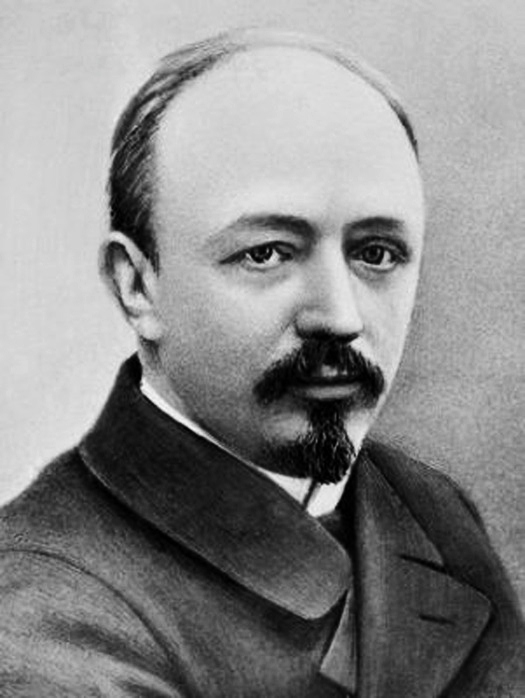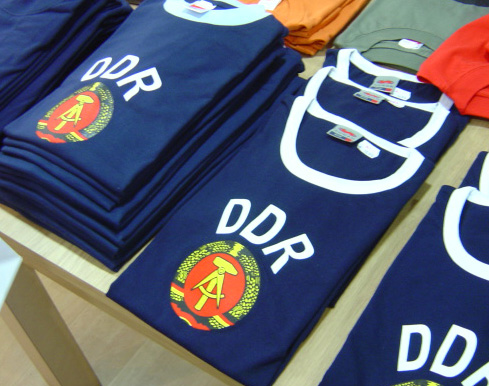|
AKhRR
The Association of Artists of Revolutionary Russia (russian: Ассоциация художников революционной России, ''Assotsiatsia Khudozhnikov Revolutsionnoi Rossii'', 1922–1928), later known as Association of Artists of the Revolution (Ассоциация художников революции, ''Assotsiatsia Khudozhnikov Revolutsii'' or AKhRR, 1928–1932) was a group of artists in the Soviet Union in 1922–1933. Diverse members of the group gained favor as the legitimate bearers of the Communist ideas into the world of art, formulating framework for the socialist realism style. It was a large association of Soviet artists, graphic artists and sculptors, which, thanks to the support of the state, was the largest and most powerful of the creative groups of the 1920s. Founded in 1922, AKhRR was active for about 10 years before it disbanded in 1932. During this time it was the forerunner of the united Artists' Union of the USSR. Original founding me ... [...More Info...] [...Related Items...] OR: [Wikipedia] [Google] [Baidu] |
Socialist Realism
Socialist realism is a style of idealized realistic art that was developed in the Soviet Union and was the official style in that country between 1932 and 1988, as well as in other socialist countries after World War II. Socialist realism is characterized by the depiction of communist values, such as the emancipation of the proletariat. Despite its name, the figures in the style are very often highly idealized, especially in sculpture, where it often leans heavily on the conventions of classical sculpture. Although related, it should not be confused with social realism, a type of art that realistically depicts subjects of social concern, or other forms of "realism" in the visual arts. Socialist realism was made with an extremely literal and obvious meaning, usually showing an idealized USSR. Socialist realism was usually devoid of complex artistic meaning or interpretation. Socialist realism was the predominant form of approved art in the Soviet Union from its development in ... [...More Info...] [...Related Items...] OR: [Wikipedia] [Google] [Baidu] |
Artists' Union Of The USSR
The Artists' Union of the USSR (russian: Союз художников СССР, translit=Soyuz khudozhnikov SSSR) was a creative union of the Soviet artists and art critics embracing the Republics of the Soviet Union. The Union was founded started in 1932 to supersede the AKhRR. The integral Union was instituted in 1957. By January 1, 1976, the Union included 14,538 members. In was officially disbanded at its 8th Congress in January 1992 after the dissolution of the Soviet Union, with its rights distributed over the corresponding unions in the post-Soviet states. History Prior to the Artists' Union of the USSR, there existed the Union of Soviet Artists (Союз советских художников, ''Soyuz sovetskikh khudozhnikov''), which was founded by Alexander Grigoriev in Moscow in spring 1930. It included Moscow and Leningrad artists along with former members of the AKhRR. The first exhibition of the Union of Soviet Artists was held on 15 April 1931 in Moscow at the ex ... [...More Info...] [...Related Items...] OR: [Wikipedia] [Google] [Baidu] |
USSR Union Of Artists
The Artists' Union of the USSR (russian: Союз художников СССР, translit=Soyuz khudozhnikov SSSR) was a creative union of the Soviet artists and art critics embracing the Republics of the Soviet Union. The Union was founded started in 1932 to supersede the AKhRR. The integral Union was instituted in 1957. By January 1, 1976, the Union included 14,538 members. In was officially disbanded at its 8th Congress in January 1992 after the dissolution of the Soviet Union, with its rights distributed over the corresponding unions in the post-Soviet states. History Prior to the Artists' Union of the USSR, there existed the Union of Soviet Artists (Союз советских художников, ''Soyuz sovetskikh khudozhnikov''), which was founded by Alexander Grigoriev in Moscow in spring 1930. It included Moscow and Leningrad artists along with former members of the AKhRR. The first exhibition of the Union of Soviet Artists was held on 15 April 1931 in Moscow at th ... [...More Info...] [...Related Items...] OR: [Wikipedia] [Google] [Baidu] |
Nikolay Kasatkin
Nikolay Alekseyevich Kasatkin (Russian: Никола́й Алексе́евич Каса́ткин; 13 December 1859, Moscow – 17 December 1930, Moscow) was a Russian painter; considered to be one of the founders of Social Realism in Russia. Biography His father was an engraver and lithographer.Brief biography @ Russian Painting. From 1873 to 1883 he studied at the with and [...More Info...] [...Related Items...] OR: [Wikipedia] [Google] [Baidu] |
Aleksandr Makovsky
Aleksandr Vladimirovich Makovsky (Russian: Александр Владимирович Маковский; 5 April 1869, Moscow – 26 October 1924, Saint Petersburg) was a Russian Realist painter and graphic artist; associated with the Peredvizhniki. Biography His father was the painter, Vladimir Makovsky, who gave him his first art lessons. His uncles, Konstantin and Nikolay were also painters.Brief biography @ Russian Paintings. In 1884, he enrolled at the Moscow School of Painting, Sculpture and Architecture, where he studied with Illarion Pryanishn ... [...More Info...] [...Related Items...] OR: [Wikipedia] [Google] [Baidu] |
RABIS
RABIS (russian: РАБИС) or Sorabis (russian: Сорабис), the widespread Trade Union of Art Workers in Bolshevik Russia and later in the Soviet Union, was a Soviet creative union (a type of Soviet trade union) formed in May 1919. The Russian РАБИС and Сорабис are the abbreviations of the Russian phrases "РАботники ИСкусства" ( en, "Art Workers") and "СОюз РАботников ИСкусства" ( en, "Union of Art Workers"), the two first characters of the words "СОюз", "РАботники" and "ИСкусства" used to add abbreviations. In 1920 a massive professional organization was formed in the Russian Soviet Federative Socialist Republic and named Vserabis (russian: Всерабис) — "ВСЕроссийский профессиональный союз РАботников ИСкусства" ( en, "All-Russian Regions Trade Union of Art Workers"). The abbreviations RABIS or Sorabis were used for local and regional Trade ... [...More Info...] [...Related Items...] OR: [Wikipedia] [Google] [Baidu] |
Ostalgie
In German culture, ''Ostalgie'' () is nostalgia for aspects of life in Communist East Germany. It is a portmanteau of the German words '' Ost'' (east) and '' Nostalgie'' (nostalgia). Its anglicised equivalent, ostalgia (rhyming with "nostalgia"), is also sometimes used. Another term for the phenomenon is GDR nostalgia (german: DDR-Nostalgie) The term was coined by the East German standup comic in 1992. Social scientist Thomas Ahbe argues that the term ‘ostalgia’ is often misunderstood as a lack of willingness to integrate, an uproar to reverse German reunification and reinstate the GDR. However, Ostalgia is rather an integration strategy used by East Germans who wanted to retain their own original experiences, memories and values incompatible with those of the West German majority. As with other cases of Communist nostalgia, there are various motivations, whether ideology, nationalism, wistfulness for a lost sense of social status or stability, or even aesthetics or ir ... [...More Info...] [...Related Items...] OR: [Wikipedia] [Google] [Baidu] |
Spanish Civil War
The Spanish Civil War ( es, Guerra Civil Española)) or The Revolution ( es, La Revolución, link=no) among Nationalists, the Fourth Carlist War ( es, Cuarta Guerra Carlista, link=no) among Carlism, Carlists, and The Rebellion ( es, La Rebelión, link=no) or The Uprising ( es, La Sublevación, link=no) among Republicans. was a civil war in Spain fought from 1936 to 1939 between the Republican faction (Spanish Civil War), Republicans and the Nationalist faction (Spanish Civil War), Nationalists. Republicans were loyal to the left-leaning Popular Front (Spain), Popular Front government of the Second Spanish Republic, and consisted of various socialist, communist, separatist, anarchist, and Republicanism in Spain, republican parties, some of which had opposed the government in the pre-war period. The opposing Nationalists were an alliance of Falangism, Falangists, monarchists, conservatives, and Traditionalism (Spain), traditionalists led by a National Defense Junta, military junt ... [...More Info...] [...Related Items...] OR: [Wikipedia] [Google] [Baidu] |
World War II
World War II or the Second World War, often abbreviated as WWII or WW2, was a world war that lasted from 1939 to 1945. It involved the World War II by country, vast majority of the world's countries—including all of the great powers—forming two opposing military alliances: the Allies of World War II, Allies and the Axis powers. World War II was a total war that directly involved more than 100 million Military personnel, personnel from more than 30 countries. The major participants in the war threw their entire economic, industrial, and scientific capabilities behind the war effort, blurring the distinction between civilian and military resources. Air warfare of World War II, Aircraft played a major role in the conflict, enabling the strategic bombing of population centres and deploying the Atomic bombings of Hiroshima and Nagasaki, only two nuclear weapons ever used in war. World War II was by far the List of wars by death toll, deadliest conflict in hu ... [...More Info...] [...Related Items...] OR: [Wikipedia] [Google] [Baidu] |
OST (art)
OST may refer to: Music * Original soundtrack * O.S.T., an alias of electronic musician Chris Douglas * ''O.S.T.'' (album), by the People Under the Stairs Science and technology * Object Storage Target in computing, used by the Lustre file system an others * Oligosaccharyltransferase, an enzyme * Open-space technology, for organising meetings * Orbit stabiliser theorem in mathematics * Offline Storage Table, a Microsoft file format * OST Family (organic solute transporter) of genes * Origins Space Telescope, a space telescope mission * Open Source Threat, any software demonstrating a device vulnerability that is open-source Organizations * Office of Science and Technology, a British government agency * Office of Secure Transportation, a US government agency * Organisation Socialiste des Travailleurs, the Socialist Workers Organisation of Senegal *Outer Space Treaty, a treaty regulating international law in outer space. Places * Ostend–Bruges International Airport, ... [...More Info...] [...Related Items...] OR: [Wikipedia] [Google] [Baidu] |
Kuzma Petrov-Vodkin
Kuzma Sergeevich Petrov-Vodkin, (; November 5, Old_Style_and_New_Style_dates.html" ;"title="nowiki/> O. S. 24 October1878 – February 15, 1939) was a Russian and USSR">Soviet painter. His early iconographic work used special creative effects based on the curve of the globe, but its images were considered blasphemous by the Russian Orthodox Church. However he went on to become the first president of the Saint Petersburg Union of Artists">Leningrad Union of Soviet Artists. His autobiographical writings attracted much praise, and have enjoyed a later revival. Biography Early years Kuzma Petrov-Vodkin was born in Khvalynsk (Saratov Oblast) into the family of a local shoemaker. His first exposure to art was in his early childhood, when he took some lessons from a couple of icon painters and a signmaker. Still, Petrov-Vodkin didn't quite see himself in art at that time; after graduating from middle school, he took a summer job at a small shipyard with plans to get into railroa ... [...More Info...] [...Related Items...] OR: [Wikipedia] [Google] [Baidu] |
Martiros Saryan
Martiros Saryan ( hy, Մարտիրոս Սարյան; russian: Мартиро́с Сарья́н; – 5 May 1972) was a Soviet Armenian painter, the founder of a modern Armenian national school of painting. Biography He was born into an Armenian family in Nakhichevan-on-Don (now part of Rostov-on-Don, Russia). In 1895 at the age of 15, he completed the Nakhichevan school and from 1897 to 1904 studied at the Moscow School of Arts, including in the workshops of Valentin Serov and Konstantin Korovin. He was heavily influenced by the work of Paul Gauguin and Henri Matisse. He exhibited his works in various shows. He had works shown at the Blue Rose Exhibit in Moscow. He first visited Armenia, then part of the Russian Empire, in 1901, visiting Lori, Shirak, Echmiadzin, Haghpat, Sanahin, Yerevan and Sevan. He composed his first landscapes depicting Armenia: '' Makravank'', 1902; ''Aragats'', 1902; ''Buffalo. Sevan'', 1903; ''Evening in the Garden'', 1903; ''In the Armenian vil ... [...More Info...] [...Related Items...] OR: [Wikipedia] [Google] [Baidu] |







.jpg)
